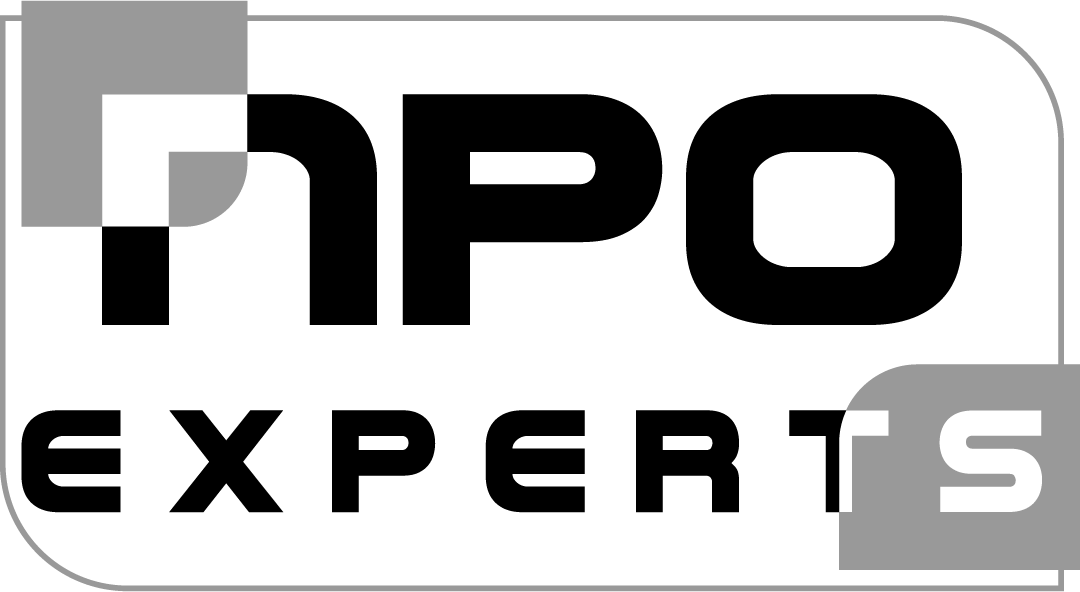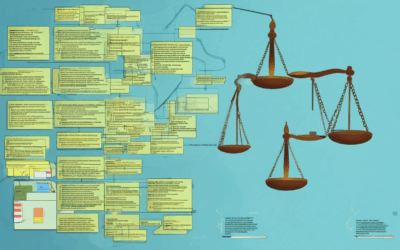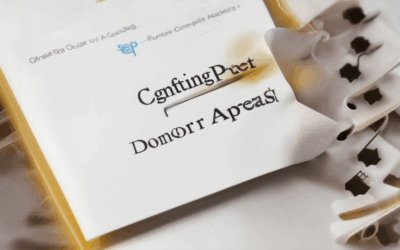Effective grant management is essential for organizations aiming to achieve their mission objectives and maximize the impact of their funding. Whether managing multiple grants, navigating complex reporting requirements, or ensuring compliance with deadlines, the ability to track grants efficiently is critical to success. In this comprehensive guide, we explore the best practices, tools, and strategies to elevate your grant management process. From understanding how to keep track of grants using free tools to evaluating the top grant software available, this article delves into the essential resources and methodologies that can transform your approach. Discover how to leverage advanced tools, such as AI-driven solutions, to streamline your workflow and improve accountability. By examining the 5 Rs of grant writing, we’ll also provide actionable insights to enhance the quality of your proposals and reports. This guide is designed to empower you with the knowledge and tools needed to excel in grant management, ensuring your organization meets its goals while maintaining the highest standards of transparency and professionalism.

How to Keep Track of Grants
Tracking grants effectively is crucial for managing your nonprofit organization’s funding and ensuring accountability. Here’s a structured approach to help you stay organized:
- Create a Grant Calendar :
Start by establishing a grant calendar. This can be a physical whiteboard, a shared digital calendar like Google Calendar or Outlook, or integrated into your task management system. Mark key dates for application deadlines, reporting periods, and payment schedules. - Use a Grant Management System :
Implement a grant management software solution tailored to your organization’s needs. Tools like NPO Expert offer comprehensive solutions that streamline grant tracking, deadline reminders, and reporting. These systems often integrate with other tools you may already use, such as spreadsheets or CRM platforms. - Organize with Spreadsheets :
If you prefer manual tracking, set up spreadsheets with columns for grant name, amount, deadline, status, and notes. Use formulas to automate calculations and color-code statuses for quick visual reference. - Leverage Task Management Systems :
Platforms like Trello, Asana, or Microsoft To-Do allow you to create projects specifically for grant applications and tracking. Assign tasks to team members, set due dates, and monitor progress with customizable workflows. - Regularly Review and Update :
Schedule regular reviews of your grant portfolio. Update statuses, note any issues or delays, and adjust timelines as needed. This helps prevent missed deadlines and ensures transparency in your organization’s financial planning. - Collaborate Across Teams :
Ensure that all team members involved in grant management have access to shared tools and calendars. Regular meetings or updates can help align everyone’s efforts and maintain accountability.
By implementing these strategies, you can efficiently track grants, meet deadlines, and maximize your nonprofit’s impact. For further insights and tools, explore NPO Expert , a trusted resource for nonprofit management.
What is the best grant software?
NPO Expert recommends exploring various grant management solutions based on your organization’s specific needs and goals. Here are some top options:
- GrantLogic – Known for its intuitive interface and robust tracking capabilities, GrantLogic is ideal for organizations managing multiple grants and projects.
- Fluxx – A powerful platform designed for collaboration and reporting, Fluxx excels in managing complex grant applications and workflows.
- Chronos – Specializing in multi-user access and real-time tracking, Chronos is a great choice for organizations with distributed teams.
- Grants Management System by NPO Expert – Tailored specifically for nonprofits, this system offers customizable templates and comprehensive tracking features.
Each solution has unique strengths, so it’s important to evaluate your organizational needs and consider factors like ease of use, integration capabilities, and support offered. NPO Expert encourages you to explore these options and find the one that aligns best with your goals. For more insights, check out our comprehensive guide on grant software .

What are the 5 R's of grant writing?
The Five R's of grant writing are essential principles that guide successful grant seekers in crafting compelling proposals. These principles ensure clarity, alignment, and resonance with funding objectives. Here’s a breakdown:
- Research – Conduct thorough research to identify funding opportunities aligned with your organization’s mission and goals. Utilize resources like NPO Expert to discover grants matching your cause.
- Relationships – Build strong relationships with funders, grantmakers, and partners. Attend conferences, join professional networks, and engage on platforms like LinkedIn to connect with potential supporters.
- Relevance – Clearly articulate how your project or initiative meets the funder’s priorities. Tailor your proposal to reflect the funder’s mission and values, ensuring alignment for better chances of success.
- Resilience – Embrace feedback and adaptability. Be prepared to revise proposals based on funder expectations and deadlines. Persistence is key in securing grants.
- Representation – Ensure diverse perspectives are reflected in your application, particularly in leadership roles. This demonstrates inclusivity and broad support for your initiatives.
By focusing on these five R’s, grant seekers can enhance their proposal quality, increase funding probabilities, and contribute meaningfully to impactful programs. Visit NPO Expert for more tips and resources to streamline your grant writing process.

Can I Use ChatGPT to Write a Grant Proposal?
Yes, ChatGPT can be a valuable tool to assist in crafting a grant proposal. Below is a structured guide on how to effectively utilize ChatGPT for this purpose:
1. Understanding the Grant Proposal Structure
A grant proposal typically includes the following sections:- Introduction : Overview of the project and its importance.- Problem Statement : Detailed description of the issue being addressed.- Proposed Solution : Description of the approach to solve the problem.- Budget : Financial breakdown of the project.- Conclusion : Summary and future implications.
2. Using ChatGPT for Content Generation
ChatGPT can generate content for each section:- Introduction : “ChatGPT can help articulate the background and significance of the project.”- Problem Statement : “It can analyze the issue and present it in a compelling manner.”- Proposed Solution : “ChatGPT can outline the approach and methods to achieve the objectives.”
3. Structuring the Proposal
Organize the content into clear sections with headings and subheadings. Use appropriate HTML tags like <h2> for main sections and <h3> for subsections.
4. Professional Tone and Clarity
Maintain a formal and persuasive tone suitable for grant proposals. Ensure the language is clear and free of jargon to communicate effectively with reviewers.
5. Incorporating Feedback
After drafting, seek feedback from experts or peers. Use tools like Grammarly or Hemingway Editor to refine the content further.
6. Adherence to Guidelines
Review grant guidelines carefully. Ensure the proposal aligns with the funder’s priorities and includes required elements like timelines and expected outcomes.
7. Conclusion
Summarize the project’s goals and anticipated impact, emphasizing its potential contribution to the field.
By leveraging ChatGPT’s capabilities, you can efficiently create a well-structured and compelling grant proposal that meets the necessary standards.
Best AI Tool for Grant Writing
When it comes to streamlining the grant writing process, several AI tools stand out as excellent options for nonprofit organizations (NPOs). Among these, Grant Assistant is often highlighted as a top choice due to its robust features and ease of use.
However, there are other notable tools that may suit different needs:
- Research Grants Pro – Ideal for organizations requiring extensive research capabilities, this tool offers advanced AI-driven tools for identifying funding opportunities and crafting tailored proposals.
- GrantStream – Known for its collaborative features, this platform allows teams to work together seamlessly, making it a great option for larger organizations with multiple stakeholders involved in grant writing.
Each tool excels in specific areas:
- Grant Assistant – Features include AI-powered grant templates, automated formatting, and a library of sample proposals.
- Research Grants Pro – Offers AI-generated reports and a comprehensive database of grant opportunities.
- GrantStream – Focuses on real-time collaboration and cloud-based document sharing.
When evaluating these tools, consider factors like ease of use, affordability, and the specific features you require. For instance, if your organization prioritizes research capabilities, Research Grants Pro might be the better fit. On the other hand, if collaboration and team efficiency are key, GrantStream offers unparalleled functionality.
Remember, there is no one-size-fits-all solution. Take advantage of free trials or demos to test which tool aligns best with your organization’s goals and workflows.

How to Train ChatGPT to Write Proposals
To effectively train ChatGPT for writing proposals, follow these organized steps:
- 1. Initial Setup
- Define the scope of your project or business need.
- Set clear objectives and expectations for the proposal content.
- 2. Data Collection
- Gather high-quality samples of well-written proposals from successful projects.
- Collect winning bid documents and losing bid documents for comparative analysis.
- Include industry-specific terminology and case studies relevant to your field.
- 3. Prompt Engineering
- Craft detailed prompts that specify the purpose, structure, and tone of the proposal.
- Use example prompts to demonstrate desired outcomes and formatting styles.
- Incorporate specific instructions for addressing key sections like executive summaries, objectives, and deliverables.
- 4. Fine-Tuning
- Evaluate the generated proposals against predefined criteria such as clarity, professionalism, and completeness.
- Iterate on prompts based on feedback from initial outputs to refine the model’s performance.
- Consider the target audience’s preferences and communication style when refining prompts.
- 5. Avoid Common Mistakes
- Teach the model to avoid overpromising or making unrealistic claims.
- Encourage the inclusion of detailed supporting evidence and documentation.
- Ensure consistency in formatting, grammar, and terminology throughout the proposal.
- 6. Peer Review and Validation
- Have a team review generated proposals to identify strengths and areas for improvement.
- Use standardized checklists to validate proposal content against key success factors.
- Implement iterative refinement cycles to continuously enhance proposal quality.
- 7. Advanced Techniques
- Utilize GPT-4’s capabilities for more nuanced and complex proposal generation.
- Integrate external tools and APIs to access real-time data and resources during generation.
- Consider leveraging machine learning models trained on proposal templates and best practices.
Conclusion: By systematically collecting data, crafting effective prompts, and iteratively refining the model, you can optimize ChatGPT’s ability to generate high-quality proposals tailored to your organization’s needs.





0 Comments